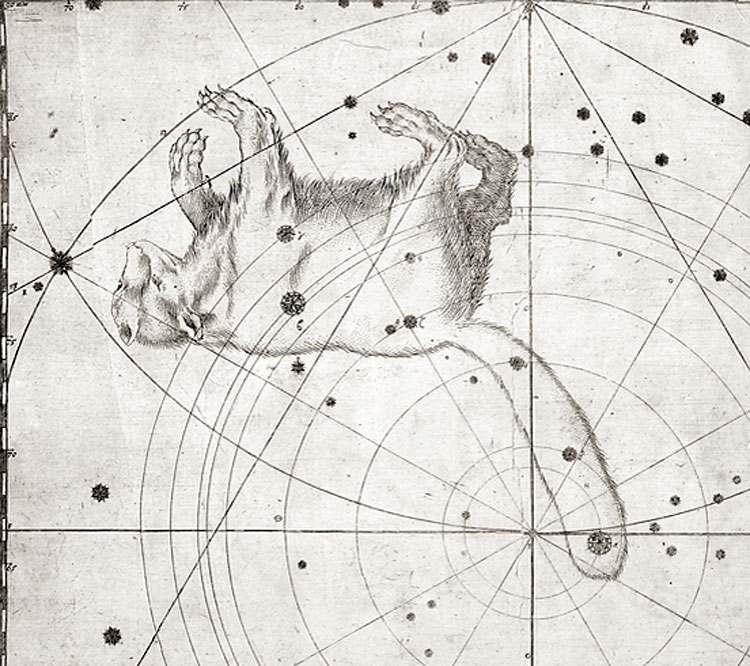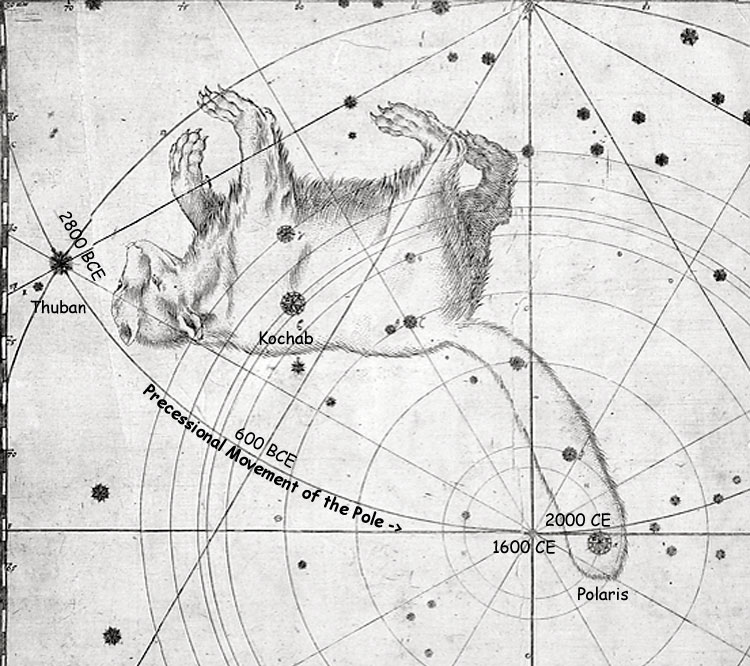Ursa Minor is one of the 48 ancient constellations recorded by Ptolemy.
Historical Map of Ursa Minor
From Bayer's 1603 Uranometria (Image Credit and © Tartu Observatory Virtual Museum; used by permission)
 Above, a portion of Bayer's map (Image Credit and © as shown above). Note that the position of the North Celestial Pole (the center of all the radial lines, or hour circles) is to the "left" of Polaris. Below, a labeled version of the map shows the Precessional Circle, and the westward motion of the Celestial Pole over a period of time. Thuban was the Pole Star when the Pyramids were being built, and Kochab was the closest bright star to the Pole in Hellenic times. Even as recently as 1603, when Bayer did his map, the Pole was not as close to Polaris as it is today. In coming centuries it will gradually swing away from Polaris, and other stars will successively become the Pole Star. 
Modern Map of Ursa Minor
Modified version of Wikimedia Commons map by Torsten Bronger

Constellations Bordering Ursa Minor
Camelopardalis, Cepheus, Draco
Stars in Ursa Minor
Stars that have common names often have multiple names, so the common names shown (if any) cannot be considered authoritative. Right ascension and declination are given in 2000.0 coordinates.
α UMi (Polaris)
β UMi (Kochab = Kocab)
γ UMi (Pherkad)
δ UMi
ε UMi
|